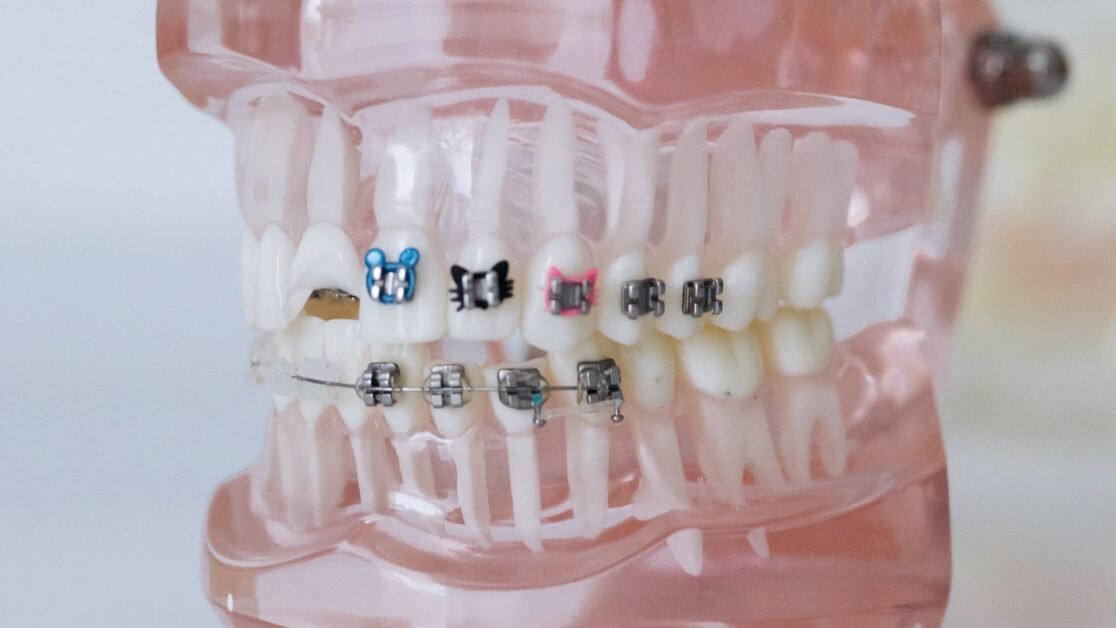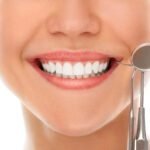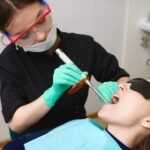Table of Contents
The Benefits of Braces Beyond Appearance

Orthodontic treatment, such as braces, is often associated with achieving a beautiful, straight smile. While aesthetics play a significant role, the benefits of braces extend far beyond appearance. Straightening misaligned teeth can result in several positive outcomes, including improved oral health, enhanced speech and communication skills, and even prevention of future dental problems.
First and foremost, braces can help correct dental misalignments, such as overcrowding, gaps, and crooked teeth. By bringing the teeth into proper alignment, it becomes easier to maintain good oral hygiene. Straightened teeth are easier to clean, as they are less likely to trap food particles and plaque. This can significantly reduce the risk of dental issues like tooth decay and gum disease, leading to improved oral health overall.
In addition to oral health benefits, braces can also enhance speech and communication skills. Misaligned teeth can affect the way a person speaks, leading to difficulties with pronunciation and clarity. By aligning the teeth properly, braces can address these speech impediments and improve an individual’s ability to communicate effectively. Clear communication is not only crucial for social interactions but also plays a vital role in professional settings. Thus, the effects of braces extend beyond appearance and impact various areas of life.
How Braces Correct Dental Misalignments

Dental misalignments are a common issue faced by many individuals, affecting both their oral health and overall well-being. Fortunately, braces offer an effective solution to correct these misalignments and restore dental harmony. By applying consistent pressure on the teeth, braces gradually move them into their proper positions, aligning both the upper and lower jaws.
Braces work by utilizing brackets, wires, and elastic bands to guide the teeth into alignment. The brackets are bonded to the teeth, while the wires exert gentle pressure to shift them slowly. Over time, this gradual movement allows for the correction of various dental issues, such as crooked teeth, crowded teeth, and gaps between teeth. Additionally, braces can address more complex alignment problems, including overbites, underbites, and crossbites.
The process of aligning the teeth with braces requires patience and dedication. Regular adjustments are needed to ensure that the teeth continue to move in the desired direction. The duration of treatment varies depending on the severity of the misalignment, ranging from a few months to a few years. Nonetheless, the long-term benefits of braces far outweigh the temporary inconvenience, as they can significantly improve not only the appearance of the smile but also overall dental function and oral health.
Improving Oral Health with Braces

Orthodontic treatment with braces not only enhances the appearance of your smile but also plays a significant role in improving your overall oral health. Properly aligned teeth are easier to clean, decreasing the risk of tooth decay and gum disease. When teeth are crowded or misaligned, it can be challenging to reach every surface during brushing and flossing, leading to plaque buildup and potential oral health issues. Braces help address these dental misalignments, making oral hygiene more effective and reducing the likelihood of dental problems.
In addition to facilitating better oral hygiene practices, braces can also correct bite problems, such as an overbite or underbite. When the upper and lower teeth do not align correctly, it can impact the way you chew and speak. Misaligned bites can put stress on specific teeth and jaw joints, leading to discomfort and even temporomandibular joint disorder (TMJ). By correcting the bite, braces not only improve the functionality of your teeth but also alleviate strain on the jaw muscles and joints, promoting better oral health and overall well-being.
Enhancing Speech and Communication Skills
Braces are not only beneficial for improving dental aesthetics, but they also play a significant role in enhancing speech and communication skills. Dental misalignments, such as crooked or crowded teeth, can have a direct impact on the clarity of speech and may impede effective communication. Misaligned teeth can create difficulties in articulating certain sounds, leading to speech impediments or lisping.
By addressing these oral issues, braces can help individuals achieve better speech and communication. As the teeth are gradually moved into their correct positions, the spaces between them are reduced, enabling the tongue and lips to form sounds more accurately. This results in improved articulation and clearer pronunciation, enhancing overall speech fluency and intelligibility.
Moreover, braces can also positively impact an individual’s confidence in social interactions. Speech impediments caused by dental misalignments can potentially lead to self-consciousness and hinder effective communication. By correcting these issues, braces can boost self-esteem and encourage individuals to engage more confidently in conversations, both personally and professionally.
In addition to the aesthetic benefits, the impact of braces on speech and communication skills can significantly contribute to an individual’s overall oral health and well-being. It is important to consult with an orthodontist to determine the appropriate treatment approach for optimizing both dental aesthetics and speech correction.
Preventing Future Dental Problems with Braces
Braces not only help in achieving a straighter smile, but they also play a crucial role in preventing future dental problems. One of the key benefits of braces is their ability to address malocclusions, or bad bites, which can lead to a range of oral health issues if left untreated.
Improper alignment of teeth can contribute to difficulties in chewing and biting, leading to excessive wear and tear on certain teeth. This can eventually result in tooth loss or other dental complications. By correcting dental misalignments with braces, individuals can restore proper occlusion, preventing the development of such problems.
Furthermore, braces can assist in reducing the risk of gum disease and tooth decay. Crowded or overlapping teeth are harder to clean effectively, making it easier for plaque and food particles to build up and cause issues. With the aid of braces, teeth can be realigned, creating the optimal spacing needed for proper oral hygiene practices. This can help individuals maintain healthier gums and teeth, reducing the likelihood of future dental problems.
By addressing malocclusions and improving oral hygiene, braces effectively serve as a preventive measure against a multitude of dental issues. With the help of orthodontic treatment, individuals can enjoy a healthier and more resilient smile, significantly lowering the risks of future dental complications.
Preventing future dental problems while wearing braces is essential to ensure successful orthodontic treatment and maintain oral health. Here are some tips for preventing dental issues during and after braces:
| Preventing Future Dental Problems with Braces | Guidelines |
|---|---|
| 1. Maintain Excellent Oral Hygiene | – Brush your teeth after every meal and snack using a soft-bristled toothbrush and fluoride toothpaste. |
| – Use an interdental brush, floss threader, or water flosser to clean between braces wires and teeth. | |
| – Rinse with an antimicrobial mouthwash to help reduce bacteria and plaque buildup. | |
| 2. Attend Regular Dental Check-ups | – Schedule regular dental check-ups and cleanings with your orthodontist and dentist. |
| – Dental visits allow for monitoring of braces progress, adjustment of wires and brackets, and early detection of any potential issues. | |
| 3. Follow Orthodontist’s Instructions | – Adhere to your orthodontist’s instructions regarding wearing rubber bands, headgear, or other orthodontic appliances. |
| – Follow recommended dietary restrictions to avoid damaging braces or causing tooth decay. | |
| 4. Avoid Hard, Sticky, and Sugary Foods | – Minimize consumption of hard, sticky, and sugary foods that can damage braces, increase the risk of cavities, and prolong treatment time. |
| – Opt for braces-friendly foods such as soft fruits, cooked vegetables, lean proteins, and dairy products. | |
| 5. Wear a Mouthguard During Sports | – Wear a mouthguard while participating in sports or physical activities to protect your teeth, braces, and mouth from injury. |
| – Your orthodontist can provide a custom-fitted mouthguard designed to accommodate braces. | |
| 6. Avoid Bad Habits and Orthodontic Hazards | – Avoid chewing on hard objects like ice, pens, or pencils that can damage braces or brackets. |
| – Break bad habits such as nail-biting or biting on objects to prevent damage to braces and minimize the risk of orthodontic emergencies. | |
| 7. Maintain a Balanced Diet and Hydration | – Eat a balanced diet rich in vitamins, minerals, and nutrients to support overall oral health and orthodontic treatment. |
| – Drink plenty of water throughout the day to stay hydrated and flush away food particles and bacteria from around braces. | |
| 8. Practice Patience and Compliance | – Be patient and compliant with your orthodontic treatment plan, including wearing elastics, attending appointments, and practicing good oral hygiene habits. |
| – Follow your orthodontist’s recommendations for braces care and maintenance to achieve the best results and prevent future dental problems. |
Boosting Self-Confidence and Mental Well-being
Orthodontic treatment, such as braces, not only improves physical appearance but also plays a significant role in boosting self-confidence and enhancing mental well-being. Many individuals who undergo orthodontic treatment report a positive change in their self-esteem and overall satisfaction with themselves. Straightening crooked teeth, closing gaps, and aligning the bite can greatly enhance the appearance of a person’s smile, which directly impacts how they feel about themselves.
Research studies have consistently shown a strong correlation between a healthy, attractive smile and higher levels of self-confidence. When individuals feel good about their smile, they are more likely to engage in social situations, express themselves confidently, and form strong connections with others. This improved self-confidence can have a far-reaching impact on one’s mental well-being, leading to improved overall happiness and quality of life.
Moreover, orthodontic treatment not only results in physical changes but can also lead to mental health benefits. When individuals feel more confident about their smile and appearance, they often experience reduced feelings of self-consciousness and anxiety. The process of achieving a straighter smile through braces involves perseverance and commitment, which can further contribute to a sense of accomplishment and increased self-esteem.
In conclusion, the transformative effects of braces extend beyond physical appearance, leading to increased self-confidence and improved mental well-being. The journey towards a straighter and healthier smile can positively impact individuals’ overall satisfaction, social interactions, and emotional well-being
Addressing Jaw and Bite Issues with Braces
Misalignments in the jaw and bite can cause a range of issues, from pain and discomfort to difficulty chewing and speaking. Braces offer an effective solution for addressing these problems and restoring proper alignment. By applying gentle, consistent pressure to the teeth and jaw, braces gradually guide them into their correct positions, resulting in a balanced bite and improved jaw function.
One common jaw and bite issue that braces can address is malocclusion, which refers to a misalignment between the upper and lower teeth when the jaw is closed. This can manifest as an overbite, underbite, crossbite, or open bite. Braces work by realigning the teeth, ensuring they fit together correctly when the mouth is closed. This not only improves the overall appearance of the smile but also enhances oral function and reduces the risk of related problems such as tooth decay and gum disease.
Correcting Teeth Crowding and Spacing
Teeth crowding and spacing issues can cause more than just aesthetic concerns. When teeth are overcrowded or have large gaps between them, it can lead to various dental problems. The misalignment of teeth can make it difficult to clean them effectively, increasing the risk of plaque buildup, tooth decay, and gum disease. Additionally, crowded teeth can put excessive pressure on certain areas, leading to uneven wear and potential damage to the teeth.
Fortunately, braces offer an effective solution for correcting teeth crowding and spacing. By gently applying continuous pressure to the teeth, braces gradually shift them into their proper positions. This process not only improves the appearance of the smile but also facilitates better oral hygiene. With straightened teeth, it becomes easier to brush and floss properly, reducing the risk of dental issues. Moreover, correcting teeth crowding and spacing can help alleviate bite problems, leading to improved chewing and overall oral function. It is important to consult with a dentist or orthodontist to determine the most suitable treatment option based on individual needs.
The Role of Braces in Improving Chewing and Digestion
Braces are commonly associated with straightening teeth and improving appearance. However, their benefits extend far beyond aesthetics. One important role that braces play is in improving chewing and digestion.
When teeth are misaligned or crowded, it can lead to difficulties in effectively chewing food. This can result in larger food particles being swallowed, rather than being broken down properly in the mouth. This puts a greater strain on the digestive system as it tries to process these larger particles. Braces help to align the teeth, ensuring that they meet properly when biting down, which promotes more effective chewing. This leads to better digestion as the food is broken down into smaller, more easily digestible pieces.
In addition to aiding digestion, proper chewing has other benefits for overall oral health. It helps to stimulate the production of saliva, which is essential for maintaining healthy gums and preventing cavities. The act of chewing also exercises the jaw muscles, promoting their strength and overall oral function. By improving chewing, braces contribute to a healthier mouth and a stronger foundation for long-term dental health.
Braces and Their Impact on Overall Facial Structure
Braces have long been praised for their ability to straighten teeth and improve dental alignment. However, their impact goes beyond just creating a beautiful smile. One significant benefit of braces is their ability to positively influence the overall facial structure.
When teeth are misaligned, it can lead to an imbalance in the facial appearance. Crooked or crowded teeth can cause the face to appear asymmetrical or out of proportion. By correcting these dental misalignments, braces help to restore harmony to the facial features.
A study published in the Journal of Orthodontics found that orthodontic treatment, including braces, resulted in improved facial balance and aesthetics. The researchers noted that by aligning the teeth and jaws properly, braces can enhance the overall facial structure and contribute to a more attractive appearance.
Apart from the aesthetic aspect, braces can also have functional implications for the face. By correcting bite issues such as overbites, underbites, or crossbites, braces help to align the jaws properly. This alignment can alleviate stress on the jaw joints and muscles, potentially reducing jaw pain or discomfort. Additionally, it can promote better chewing and digestion, as the teeth are able to come together correctly, ensuring efficient breakdown of food.
It is important to note that the impact of braces on the facial structure varies depending on individual factors such as age, severity of misalignment, and treatment duration. Therefore, consulting with a qualified orthodontist is crucial to determine the best course of action for achieving desired facial changes through braces.
Overall, braces offer more than just cosmetic improvements. Through their influence on dental alignment and optimal jaw positioning, braces can have a significant impact on the overall facial structure. By addressing both appearance and functionality, braces provide patients with the opportunity for improved facial harmony and enhanced oral health.
How Braces Can Help with Sleep Apnea and Snoring
Sleep apnea and snoring are common sleep disorders that can have a significant impact on a person’s quality of life. While there are various treatment options available, including continuous positive airway pressure (CPAP) machines and surgical interventions, braces have emerged as a promising alternative in recent years.
Braces, traditionally used for straightening teeth and correcting dental misalignments, can also play a role in addressing sleep apnea and snoring. They work by repositioning the jaws and reducing the obstruction in the airway, allowing for improved airflow during sleep. This, in turn, can alleviate the symptoms of sleep apnea and reduce or eliminate snoring altogether.
Research studies have shown that braces, specifically those designed to address the underlying causes of sleep apnea and snoring, can be highly effective in improving sleep quality. A study published in the Journal of Clinical Sleep Medicine found that patients who received orthodontic treatment experienced a significant reduction in both the frequency and intensity of sleep apnea episodes. Another study published in the American Journal of Orthodontics and Dentofacial Orthopedics demonstrated that braces can decrease snoring by realigning the jaw and improving the position of the tongue, thereby reducing airway blockages.
Braces offer a non-invasive and relatively comfortable solution for individuals suffering from sleep apnea and snoring. Not only can they improve the quality of sleep, but they can also reduce the risk of associated health complications, such as cardiovascular problems and daytime fatigue. Embracing this innovative approach to addressing sleep disorders can potentially transform the lives of those affected, allowing for better sleep, improved overall health, and enhanced well-being.
The Psychological Effects of Straight Teeth
Straight teeth not only contribute to a beautiful smile, but they also have a profound impact on an individual’s psychological well-being. Numerous studies have shown the positive effects of having straight teeth on self-confidence and mental health. When individuals have teeth that are properly aligned, they are more likely to feel confident when smiling, speaking, and interacting with others. This newfound confidence can lead to improved social relationships, increased self-esteem, and a more positive outlook on life.
In addition to boosting self-confidence, straight teeth have also been found to positively affect other aspects of an individual’s life. Research suggests that individuals with aligned teeth are often perceived as more attractive, intelligent, and successful. This perception can have a significant influence on various personal and professional opportunities. Furthermore, individuals with straight teeth may experience reduced levels of stress and anxiety, as they no longer have to worry about hiding their smile or feeling self-conscious in social situations.
It is important to note that these psychological effects are not only limited to adults. Children and teenagers who undergo orthodontic treatment to straighten their teeth often experience improved self-esteem and social functioning. Addressing dental misalignments at an early age can prevent the development of negative psychological effects later in life. Therefore, orthodontic treatment should be considered not only for aesthetic purposes but also for the overall well-being of individuals.
Long-term Benefits of Orthodontic Treatment
Orthodontic treatment has long-lasting benefits that go beyond just a straight and beautiful smile. The positive effects of orthodontic treatment can be seen years after the braces are removed, making it a worthwhile investment for both children and adults.
One of the key long-term benefits of orthodontic treatment is improved oral health. Misaligned teeth can make it difficult to clean the teeth properly, leading to an increased risk of tooth decay and gum disease. By straightening the teeth with braces, it becomes easier to maintain good oral hygiene habits and keep the teeth and gums healthy. In fact, a study published in the American Journal of Orthodontics and Dentofacial Orthopedics found that orthodontic treatment reduces the risk of gum disease in adulthood by 50%.
In addition, orthodontic treatment can have a positive impact on overall facial structure. Misaligned teeth can affect the alignment of the jaw, which can lead to TMJ disorders and other jaw-related issues. By correcting the alignment of the teeth and jaw, braces can help improve the function and symmetry of the face. A study published in the Journal of Oral Rehabilitation found that orthodontic treatment not only improves dental occlusion but also positively affects the position and shape of the lips, leading to a more harmonious facial appearance.
Overall, orthodontic treatment offers long-term benefits that extend far beyond appearance. From improved oral health to enhanced facial structure, braces play a significant role in ensuring a happy and healthy smile for years to come.
How long does orthodontic treatment typically last?
The duration of orthodontic treatment varies depending on the complexity of the case, but it usually lasts between one to three years.
Is orthodontic treatment painful?
It is common to experience some discomfort or soreness during the initial stages of orthodontic treatment. However, the discomfort typically subsides as the mouth adjusts to the braces.
Can adults benefit from orthodontic treatment?
Yes, adults can benefit from orthodontic treatment. It is never too late to improve dental alignment and address oral health issues.
Can orthodontic treatment fix jaw misalignment?
Yes, orthodontic treatment can help correct jaw misalignment. By adjusting the position of the teeth, orthodontics can also improve the alignment of the jaw.
Are there any restrictions on what you can eat with braces?
While there are certain foods that should be avoided to prevent damage to braces, such as sticky candies or hard nuts, most foods can still be enjoyed during orthodontic treatment.
Can orthodontic treatment improve speech difficulties?
Yes, orthodontic treatment can help improve speech difficulties caused by dental misalignments. By aligning the teeth properly, it can enhance speech and communication skills.
Will braces affect my facial structure?
Braces can positively impact the overall facial structure by correcting dental misalignments and creating a more balanced and harmonious appearance.
Can orthodontic treatment help with sleep apnea and snoring?
In some cases, orthodontic treatment can help alleviate sleep apnea and snoring by improving the position of the jaw and opening the airway.
Are the results of orthodontic treatment permanent?
The results of orthodontic treatment can be long-lasting, but it is essential to wear retainers as recommended by the orthodontist to maintain the alignment achieved.
Can orthodontic treatment boost self-confidence?
Yes, orthodontic treatment can enhance self-confidence by improving the appearance of the smile and correcting dental irregularities.




